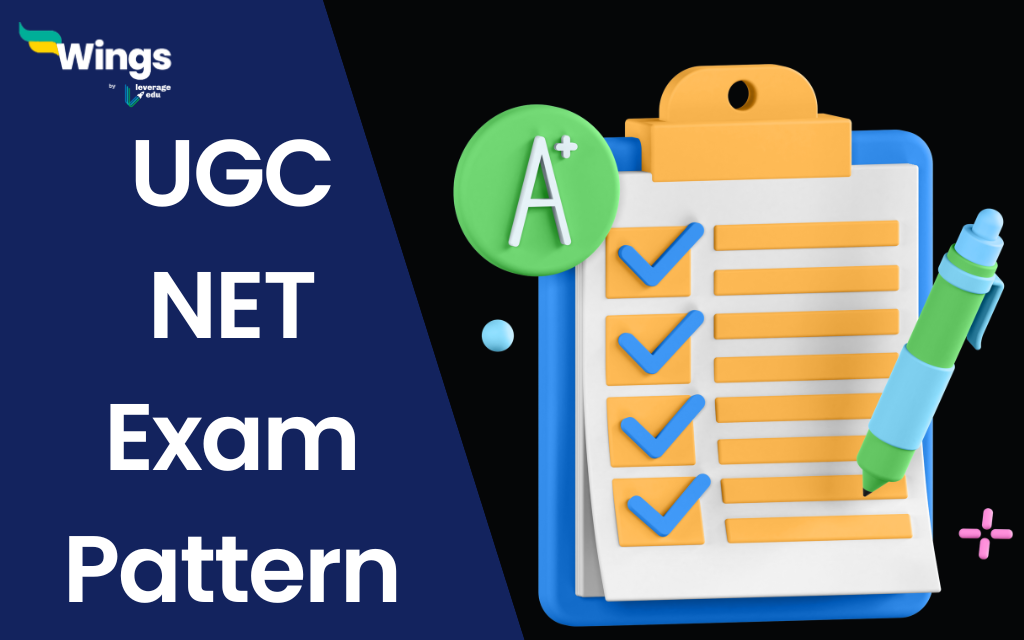UGC NET Exam Pattern: Mandatory to understand by the candidates who are preparing for the exam. As the National Testing Agency is the conducting body of the UGC NET 2023 exam, they have prescribed the exam pattern for papers 1 and 2. According to the latest exam pattern for UGC NET 2023, candidates will have only 3 hours to solve the questions in Papers 1 and 2.
Understanding the exam pattern helps students prepare for the exam better. Candidates will face a total of 150 MCQs from Paper 1 and Paper 2 in the given time. In this blog, we have mentioned information about the latest UGC NET exam pattern for papers 1 and 2, including the marking scheme, question type, and more.
| Examination Name | UGC NET 2023 |
| Conducting Body | NTA (National Testing Agency) |
| Full Form | University Grants Commission National Eligibility Test |
| Official Website | https://ugcnet.nta.nic.in/ |
Also Read: UGC NET Syllabus
UGC NET Exam Pattern 2023
It is always advised to candidates that if they are preparing for any competitive exams, then make sure they collect all the information about the exam. The UGC NET Exam 2023 is a computer-based written exam. As mentioned earlier, there are 150 questions in the MCQ form in the exam. Each question carries two marks.
Candidates can answer without worrying about marks or dedication, as there is no negative marking scheme. Paper 1 is common for candidates, while Paper 2 is subject-specific. After the UGC NET Syllabus, the pattern is the most important thing that candidates need to understand. Below, we have mentioned a few quick highlights of the exam pattern for UGC.
Highlights of the UGC NET Exam Pattern
| Particulars | Paper 1 | Paper 2 |
| Exam Mode | Online | Online |
| Duration | 60 Mins | 120 Mins |
| Types of Questions | MCQs | MCQs |
| Negative Marking | No | No |
| number of Questions | 50 | 100 |
| Total Marks | 100 | 200 |
| Marking Scheme | +2 for the correct answer | +2 for the correct answer |
UGC NET Exam Pattern for Paper 1
As per the official announcement, the questions in Paper 1 are generic in nature. The aim of these questions is to evaluate the candidate’s general knowledge, general ability and understanding of reasoning skills. It is known to all that Paper 1 is compulsory for all candidates. Below, we have mentioned a table that contains information about topics and a number of questions about UGC NET Paper 1.
| Topics or Sections | No. of Questions | Total Marks |
| Teaching Aptitude | 5 | 10 |
| Logical Reasoning | 5 | 10 |
| Data Interpretation | 5 | 10 |
| Communication | 5 | 10 |
| Reasoning (including Maths) | 5 | 10 |
| Information & Communication Technology (ICT) | 5 | 10 |
| People & Environment | 5 | 10 |
| Research Aptitude | 5 | 10 |
| Reading Comprehension | 5 | 10 |
| Higher Education System | 5 | 10 |
| Total | 50 | 100 |
UGC NET Exam Pattern for Paper 2
Paper 2 of the UGC NET exam is subject-specific. It means candidates will choose the subject of their choice. Keep in mind that candidates can only appear in the subject they have chosen after graduation. Candidates can choose one of the 82 available subjects.
| Paper | Number of Questions | Marks |
| Paper 2 | 100 | 200 |
UGC NET Marking Scheme
Candidates who are going to appear in the UGC NET Exam should have a look at the marking scheme of the exam. Below, we have mentioned a table to help you understand the marking scheme under the NET Exam Pattern.
| Unattempted questions | 0 |
| Correct Answer | +2 |
| Incorrect Answer | 0 |
FAQs
The UGC NET exam does not have a negative marking scheme. No marks will be cut or deducted for any incorrect or unanswered questions.
The exam pattern is of significant importance for various reasons, especially in competitive examinations like the UGC NET. The exam pattern helps candidates understand the structure of the exam, including the number of sections, types of questions, and mark distribution. After the exam, candidates can analyse their performance more effectively if they are familiar with the exam pattern. They can identify areas where they performed well and areas that need improvement, allowing for better self-assessment.
The questions will be objective-based for all the papers. The students will get multiple-choice questions (MCQs).
For more details about this exam, visit the Indian Exam section of Leverage Edu.
 One app for all your study abroad needs
One app for all your study abroad needs














